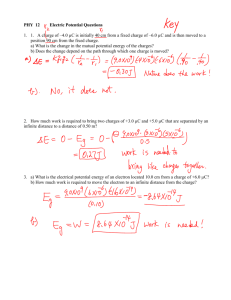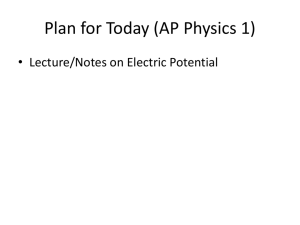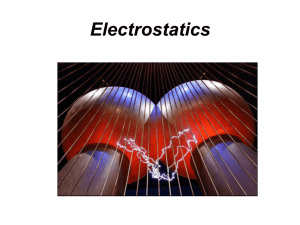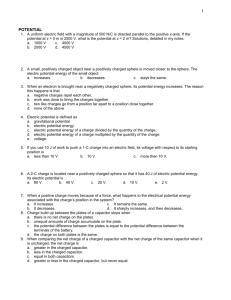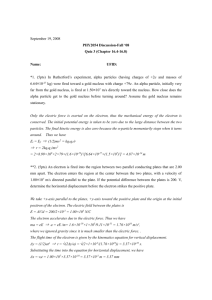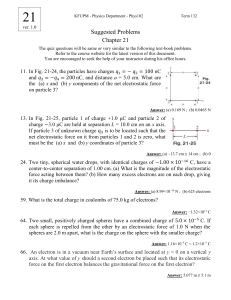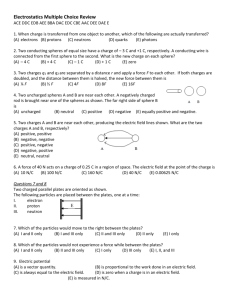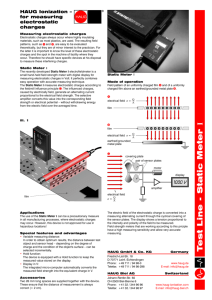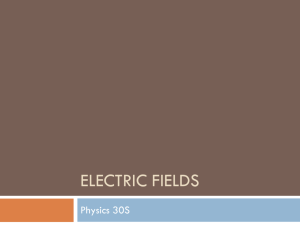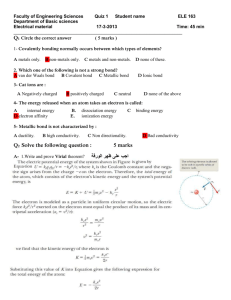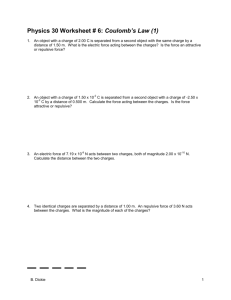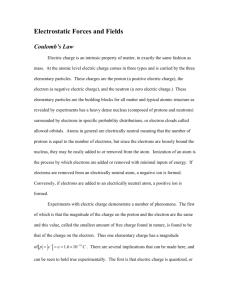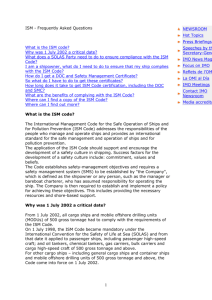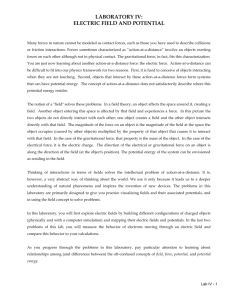Honors Physics Work Sheet #1 Electric Potential Energy and Electric
advertisement
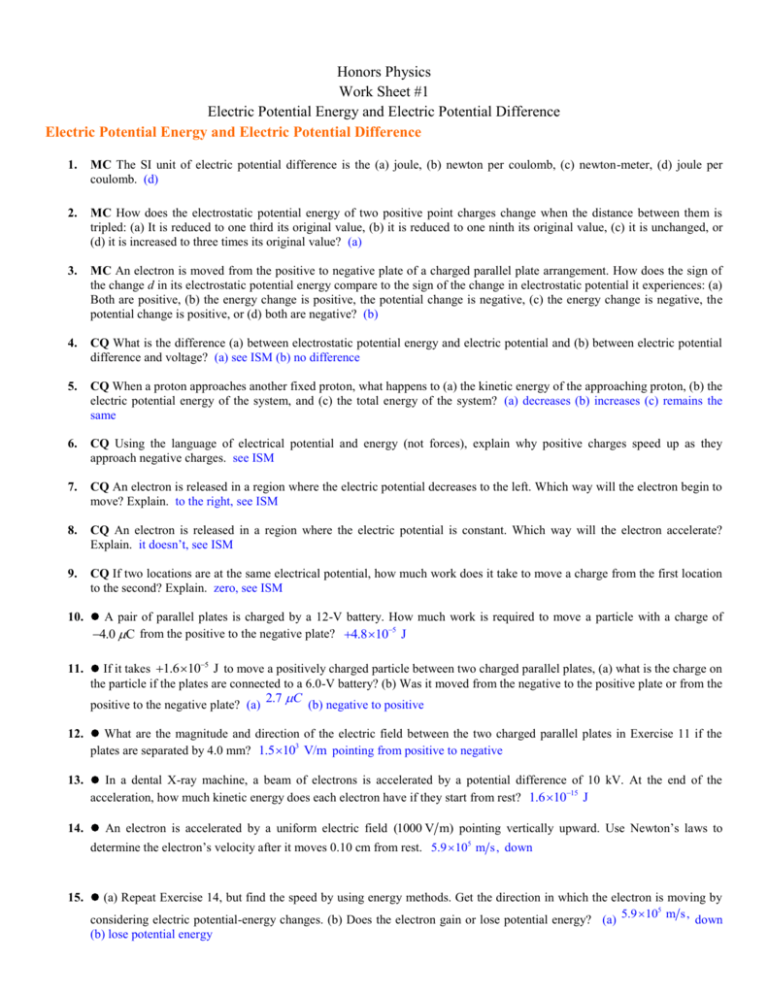
Honors Physics Work Sheet #1 Electric Potential Energy and Electric Potential Difference Electric Potential Energy and Electric Potential Difference 1. MC The SI unit of electric potential difference is the (a) joule, (b) newton per coulomb, (c) newton-meter, (d) joule per coulomb. (d) 2. MC How does the electrostatic potential energy of two positive point charges change when the distance between them is tripled: (a) It is reduced to one third its original value, (b) it is reduced to one ninth its original value, (c) it is unchanged, or (d) it is increased to three times its original value? (a) 3. MC An electron is moved from the positive to negative plate of a charged parallel plate arrangement. How does the sign of the change d in its electrostatic potential energy compare to the sign of the change in electrostatic potential it experiences: (a) Both are positive, (b) the energy change is positive, the potential change is negative, (c) the energy change is negative, the potential change is positive, or (d) both are negative? (b) 4. CQ What is the difference (a) between electrostatic potential energy and electric potential and (b) between electric potential difference and voltage? (a) see ISM (b) no difference 5. CQ When a proton approaches another fixed proton, what happens to (a) the kinetic energy of the approaching proton, (b) the electric potential energy of the system, and (c) the total energy of the system? (a) decreases (b) increases (c) remains the same 6. CQ Using the language of electrical potential and energy (not forces), explain why positive charges speed up as they approach negative charges. see ISM 7. CQ An electron is released in a region where the electric potential decreases to the left. Which way will the electron begin to move? Explain. to the right, see ISM 8. CQ An electron is released in a region where the electric potential is constant. Which way will the electron accelerate? Explain. it doesn’t, see ISM 9. CQ If two locations are at the same electrical potential, how much work does it take to move a charge from the first location to the second? Explain. zero, see ISM 10. A pair of parallel plates is charged by a 12-V battery. How much work is required to move a particle with a charge of 4.0 C from the positive to the negative plate? 4.8 105 J 11. If it takes 1.6 105 J to move a positively charged particle between two charged parallel plates, (a) what is the charge on the particle if the plates are connected to a 6.0-V battery? (b) Was it moved from the negative to the positive plate or from the positive to the negative plate? (a) 2.7 C (b) negative to positive 12. What are the magnitude and direction of the electric field between the two charged parallel plates in Exercise 11 if the plates are separated by 4.0 mm? 1.5 103 V/m pointing from positive to negative 13. In a dental X-ray machine, a beam of electrons is accelerated by a potential difference of 10 kV. At the end of the acceleration, how much kinetic energy does each electron have if they start from rest? 1.6 1015 J 14. An electron is accelerated by a uniform electric field (1000 V m) pointing vertically upward. Use Newton’s laws to determine the electron’s velocity after it moves 0.10 cm from rest. 5.9 105 m s , down 15. (a) Repeat Exercise 14, but find the speed by using energy methods. Get the direction in which the electron is moving by 5.9 105 m s , considering electric potential-energy changes. (b) Does the electron gain or lose potential energy? (a) down (b) lose potential energy 16. IE Consider two points at different distances from a positive point charge. (a) The point closer to the charge is at a (1) higher, (2) equal, (3) lower potential than the point farther away. Why? (b) How much different is the electric potential 20 cm 1.2 105 V from a charge of 5.5 C compared to 40 cm from the same charge? (a) (1) higher (b) 17. IE (a) At one third the original distance from a positive point charge, by what factor is the electric potential changed: (1) 1 3, (2) 3, (3) 1 9, or (4) 9? Why? (b) How far from a 1.0-C charge is a point with an electric potential value of 10 kV? (c) How much of a change in potential would occur if the point were moved to three times that distance? (a) (2) 3 (b) 0.90 m (c) 6.7 kV 20. How much work is required to completely separate two charges (each 1.4 C ) and leave them at rest if they were initially 8.0 mm apart? 2.2J


